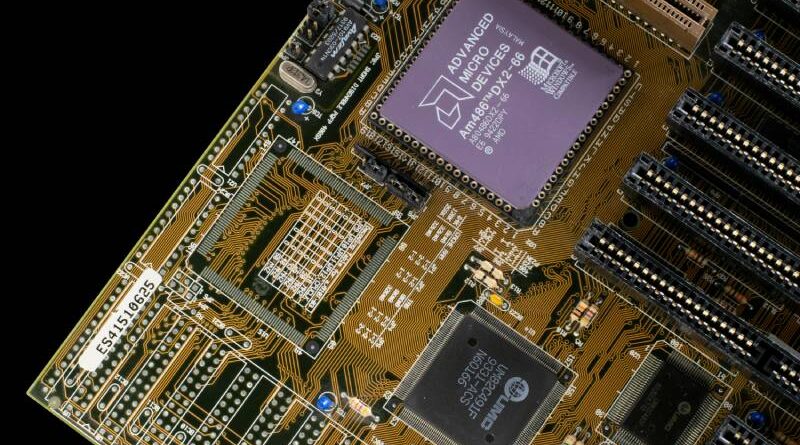Snapdragon Processors – Advantages & Disadvantages
Snapdragon processors are system-on-chip (SoC) products designed and manufactured by Qualcomm Technologies, Inc. These processors are primarily used in smartphones, tablets, and other mobile devices. Snapdragon processors integrate various components, including the central processing unit (CPU), graphics processing unit (GPU), modem, and other system components, into a single chip. This integration aims to provide high performance, energy efficiency, and connectivity capabilities to mobile devices.
Evolution of Snapdragon Processors
Early Generations:
- In 2007, Snapdragon processors were introduced.
- Early generations focused on providing basic processing power and wireless connectivity for mobile devices.
- These processors were commonly found in feature phones and early smartphones.
Advancements and Innovation:
- Subsequent generations of Snapdragon processors introduced significant advancements in performance, power efficiency, and feature integration.
- Qualcomm continuously innovated with each new iteration, improving CPU and GPU performance, enhancing AI capabilities, and integrating advanced connectivity technologies.
Expansion Beyond Smartphone:
- This type of processors expanded beyond smart phones to power other devices, including tablets, wearable’s, automotive infotainment systems, and IoT devices.
- Qualcomm developed specialized variants of Snapdragon processors tailored to specific market segments, such as the Snapdragon Wear platform for wearable’s and Snapdragon Automotive for automotive applications.
Architecture and Components
CPU:
- Snapdragon processors feature multi-core CPUs based on ARM architecture.
- Recent generations incorporate custom Qualcomm Kryo CPU cores, offering high performance and power efficiency.
- CPU cores are typically organized into clusters. Each cluster optimized for specific tasks, such as performance-oriented tasks or power-efficient operation.
GPU:
- These processors integrate Adreno GPUs for graphics rendering.
- Adreno GPUs deliver high-quality graphics performance, enabling smooth gaming, video playback, and user interface interactions.
- Qualcomm continuously improves Adreno GPUs to support higher resolutions, frame rates, and graphical effects.
Modem and Connectivity:
- One of the key features of Snapdragon processors is their integrated modem.
- This type of processors support various wireless technologies, including 5G, 4G LTE, Wi-Fi, Bluetooth, and GPS.
- Integrated modems enable fast and reliable connectivity, facilitating seamless communication and internet access on mobile devices.
AI and Machine Learning:
- This type of feature dedicated AI engines for machine learning and artificial intelligence tasks.
- These AI engines accelerate AI computations, enabling advanced features such as image recognition, natural language processing, and intelligent camera capabilities.
- Qualcomm’s AI technologies empower developers to create innovative applications and services that leverage the power of AI on mobile devices.
Multimedia and Camera:
- This type of offer advanced multimedia capabilities, including support for high-resolution displays, HDR video playback, and immersive audio experiences.
- Qualcomm’s Spectra image signal processors (ISPs) enable high-quality image and video capture, supporting features like multi-camera setups, 4K video recording, and computational photography.
Advantages
Performance:
- Snapdragon processors deliver high-performance computing capabilities, enabling smooth multitasking, gaming, and productivity tasks.
- Custom Qualcomm Kryo CPU cores and Adreno GPUs provide excellent processing power and graphical performance, ensuring a responsive user experience.
Power Efficiency:
- Snapdragon processors are designed for energy efficiency, balancing performance with power consumption.
- Advanced power management features optimize power usage across different components, prolonging battery life and enhancing device endurance.
Connectivity:
- Snapdragon processors integrate advanced modem and connectivity technologies, including 5G, Wi-Fi 6, and Bluetooth.
- Fast and reliable wireless connectivity enables seamless communication, streaming, and internet browsing on mobile devices.
AI and Machine Learning:
- Snapdragon processors feature dedicated AI engines and hardware accelerators for AI and machine learning tasks.
- AI capabilities enable intelligent features such as voice recognition, scene detection, and real-time translation, enhancing user experiences and enabling new applications.
Multimedia and Camera:
- Snapdragon processors offer robust multimedia and camera capabilities, supporting high-resolution displays, HDR content, and advanced camera features.
- Spectra ISPs enable superior image quality, low-light performance, and advanced photography effects, empowering users to capture stunning photos and videos.
Disadvantages
Fragmentation and Compatibility:
- Snapdragon processors are used in a wide range of devices from various manufacturers, leading to fragmentation in software and hardware compatibility.
- Device manufacturers may customize software or hardware components, potentially leading to inconsistencies in performance, features, or software updates.
Thermal Management:
- Intensive workloads or prolonged usage may lead to thermal throttling in some Snapdragon-powered devices.
- Thermal management mechanisms aim to prevent overheating by reducing CPU or GPU performance, potentially impacting performance under sustained loads.
Vendor Dependence:
- Qualcomm’s dominance in the mobile processor market may lead to vendor dependence for device manufacturers.
- Limited competition in the market may result in fewer options for device manufacturers and potentially higher costs for consumers.
Security and Privacy Concerns:
- As with any connected device, Snapdragon-powered devices may be susceptible to security vulnerabilities or privacy risks.
- Device manufacturers and software developers must implement robust security measures to protect user data and mitigate potential threats.
Conclusion
Snapdragon processors represent a leading choice for mobile devices, offering a balance of performance, power efficiency, and connectivity capabilities. With continuous innovation and advancements in CPU, GPU, AI, and connectivity technologies, Snapdragon processors empower users to enjoy immersive experiences and stay connected in a rapidly evolving digital world. While they come with advantages such as high performance, energy efficiency, and advanced features, Snapdragon processors also face challenges such as fragmentation, thermal management, vendor dependence, and security concerns. Nonetheless, Qualcomm’s commitment to innovation and collaboration with device manufacturers and ecosystem partners ensures that Snapdragon-powered devices continue to deliver compelling experiences to users worldwide.




